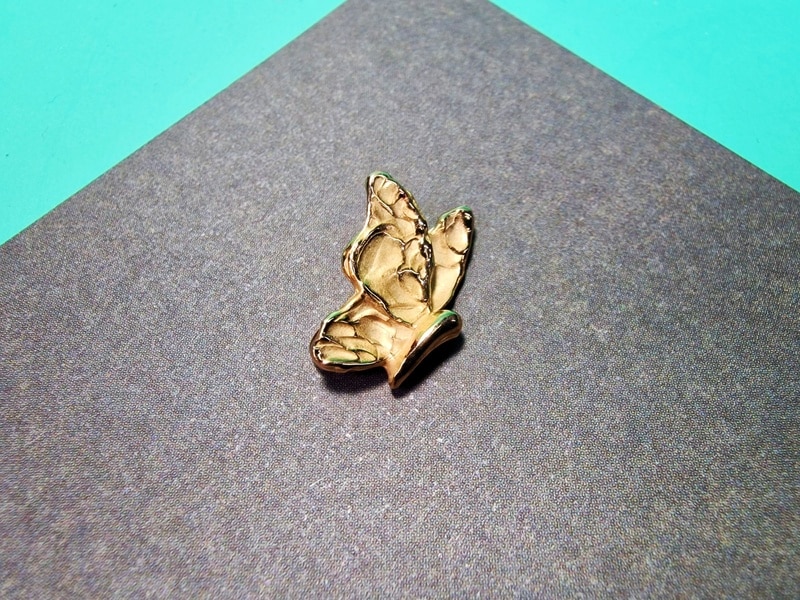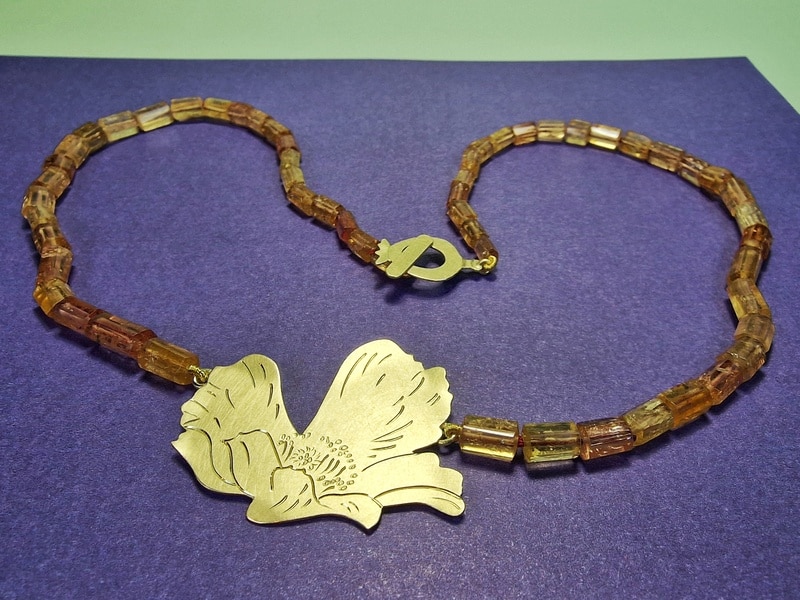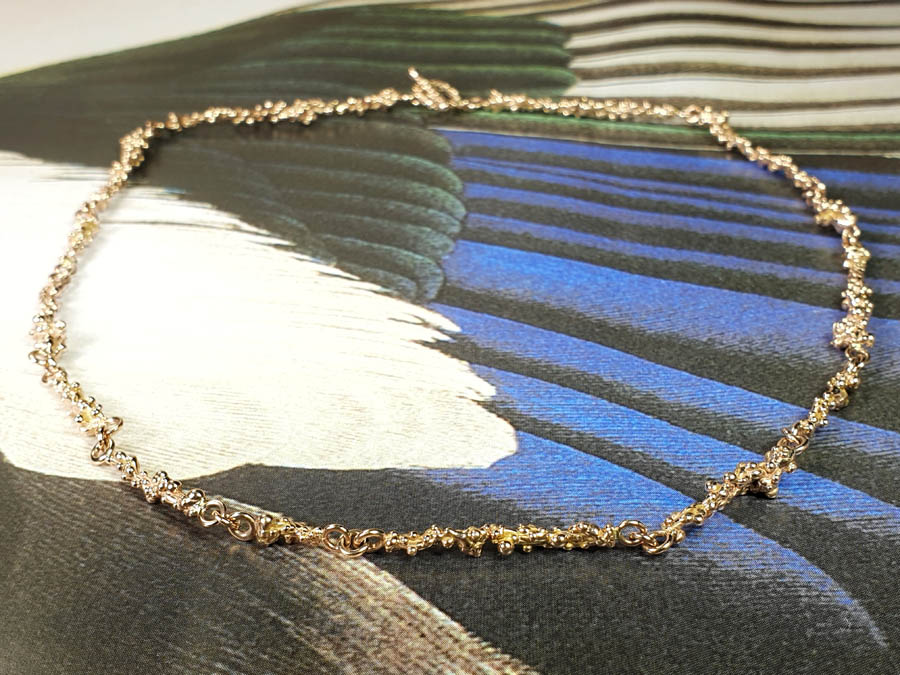goldfever
In this gold fever blog, we’d like to give you more background on gold. What is a precious metal? And an alloy? What colors of gold are there? How is gold formed? What is urban mining? And much more.
what is gold?
Gold is the most well-known precious metal. It is the chemical element with the symbol Au (the Latin word is aurum) and it has the atomic number 79, making it one of the higher atomic number elements that occur naturally. In its purest form, it is a bright, slightly reddish yellow metal. Throughout history it has been appreciated for its beauty and scarcity. Also referred to as ‘the king of metals’.
what is an alloy?
Because of the softness of pure (24k) gold, it is usually alloyed with other metals for use in jewellery, altering its hardness, ductility, melting point, colour and other chemical properties. This metal mix is called an alloy. Gold alloys, typically 21 ct, 18 ct, or 14 ct contain higher percentages of copper or other precious metals like silver or palladium in the mix to lower the carat. At Oogst we usually work with the 14 ct gold alloy. By request, we also create jewellery in 18 ct gold. Historically 9 ct is not considered gold in The Netherlands and consequently not used.
Fun fact: In the old days golden coins were made of pure gold, which is very soft. That’s where the habit originated to bite a coin to test if it is real.
what are those hallmarks in a jewel about
In The Netherlands we have ‘de Waarborg’, the Assay Office, an institute that checks the gold content in a piece of jewellery. They will test the piece and stamp it with the right carat symbol. Pure gold will get a stamp of 999, 18 carat gold will get a stamp of 750 and 14 carat gold will get a stamp of 585. The number is representing the pure gold percentage (as a part of 1000 parts) in the alloy. The other part is consisting of other metals like copper, silver or palladium. Therefore the alloy in 14 crt gold consists of 585 parts pure gold and 415 parts other metals, out of 1000 parts of the alloy. The added metals define the color of the gold.
These alloy proportions are calculated carefully and can be checked with aqua regia or with special x-ray equipment. Here you can see some of the hallmarks in use in The Netherlsé gold pendant

what kind of precious metals are there?
A precious metal is a metal that doesn’t get oxidized easily. For this reason precious metals are used to create jewellery. Gold and platinum will always look lovely and untarnished. Silver can get a little black after a while, but is easily polished. Non precious metals are for example copper, iron and sink.
All of the precious metals lined up: Platinum, Gold, Silver, Rhodium, Osmium, Palladium, Iridium, Ruthenium, Tungsten and Collodium. At Oogst we use Silver, Gold, Platinum and Palladium to create our jewellery.
what colour gold do we use?
By mixing pure gold with other metals you change the characteristics. This influences the alloy’s colour, hardness and ductility. At Oogst we work with 4 colours of gold. Yellow, rose and rosé gold are all made of pure gold mixed with silver and copper but in different proportions. And white gold. Until not so long ago white gold was an alloy of fine gold mixed with nickel, but because a lot of people have nickel allergy it has been banned from the market for 15 years already. At Oogst we work with the most precious white gold alloy made of fine gold and palladium. This mix gives it a beautiful greyish tone.
There are other combinations of metals possible. You could create greenish or purplish gold, but these are too brittle to create jewellery with.
From left to right the colours of 14 ct rosé gold, rose gold, yellow gold and palladium white gold.




is gold a sustainable product?
Yes and No. Recycling your own gold is lovely sustainable way to create a gold jewel. The mining and transport of gold is quite environmentally harmful.
Which is why we prefer to use ‘recycled gold’ for all our jewellery. This gold has been recycled locally in The Netherlands. Every goldsmith participates by collecting all their filings and leftover pieces and bringing them to be recycled. But other industries, and private individuals who exchange their gold jewellery for cash, contribute as well. All this gold is collected, cleansed and re-alloyed by our suppliers. This is called ‘urban mining’. Then the locally recycled gold is brought back to the market, so we can then create something from it.
using your own heirloom gold
Did you know you can also bring your own heirloom gold to our studio, like an outdated or broken necklace, or a ring you inherited from your grandmother. We can melt it and re-use the gold or gemstones for a new Oogst design. Transform it from an heirloom to a showpiece! Want to see some examples, discover our bespoke pieces created from heirlooms in the Oogst studio here.
more information about gold as a material
An interesting fact is that the precious metal gold has been present on Earth since the Big Bang, the formation of our planet. It was created in space by a collision of neutron stars. After the explosion, dust particles containing tiny bits of gold were flung into space. And that’s how gold ended up in the Earth’s core. More details on this theory see Wikipedia’s page on gold.
gold as an ingredient
We naturally love using precious metals to create something beautiful. Curious about our collection of handmade gold jewellery? Schedule an appointment and visit us! We’d love to see you in the store!
